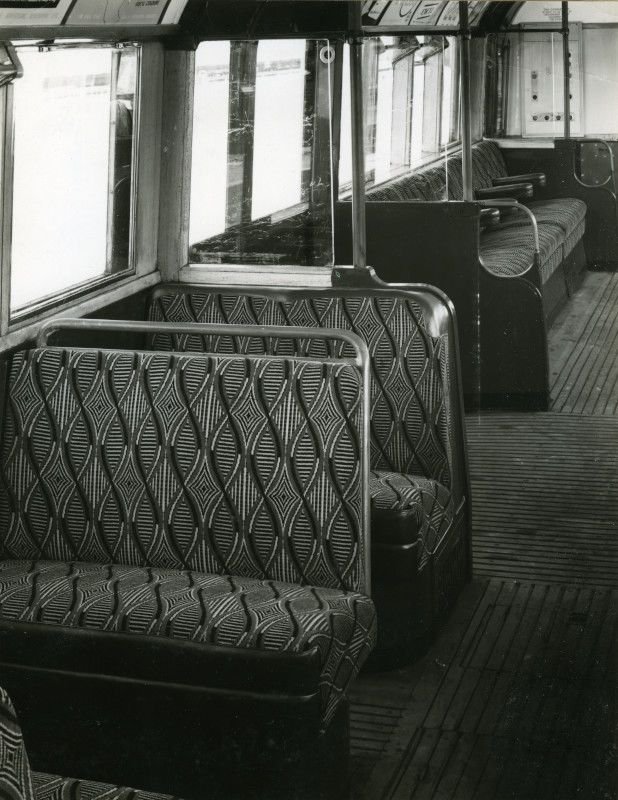Enid Marx
As a pioneer of pattern Enid Marx relished the ‘restrictions on colours and yarns, and the opportunity to cheer up people’s lives ‘
Enid Marx carving blocks post 1945 (English Heritage)
The inspiration behind our latest print collection is the work of textile artist Enid Marx, affectionately known by her friends as ‘Marco’. Marx first studied at the Central School of Arts and Crafts before moving to the Royal College of Art in 1922. There she failed her final diploma assessment as her work was deemed to be too “vulgar”, a consequence of her love of abstraction and geometric patterns and the catalyst of our extensive research into her work.
'Municipal' pattern paper for the Little Gallery, from wood engraving, c. 1930 © Estate of Enid Marx.
As with many other female practitioners at the time, Enid Marx found herself encouraged to work on traditional art production, focusing on ‘craft-based’ activities such as weaving, textile design and printmaking.
Her career began after she left behind the strict focus of Naturalism at the RCA, becoming an apprentice to two eccentric British hand-block printers - Phyllis Barron and Dorothy Larcher (two of the leading female printmakers of the time). As with most apprenticeships, Marx learned the skills from the ground up, washing and ironing fabrics, and mixing dyes until a year later she opened her own studio in a former cowshed in Hamstead.
Sketch for moquette design Shield, by Enid Marx, 1945
During the 1920s she became widely known for her hand-blocked textiles and patterned papers, and in the 1930s was commissioned by Christian Barman (Publicity Officer at London Transport) to design woolen moquette seating fabric for the London Underground.
She said her two main considerations when designing fabric for public transport were, ‘dazzle and dirt’. They couldn’t make passengers feel sick on the journey, and they couldn’t pick up the dirt too much. She found that ‘the best method of ensuring the seats would look clean after a period of use was to use strongly contrasting tones and rather brilliant colour’.
Her best-known moquette was ‘Shield’, using curves rather than the straight lines of her previous London Transport patterns. She used a combination of tones of red and green, coordinating with the green metalwork and red leather armrests of the train carriages.
Marx volunteered to design textiles for the wartime Utility Furniture Scheme, creating joyful, affordable printed fabric for the home of those returning from war. There were two main criteria for the project, to introduce innovative, quality design while remaining resourceful in a time of crisis.
In 1944 she was the first ever female engraver to be awarded the title of Royal Designer for Industry.
Enid Marx’s commitment to geometric design (despite being disregarded by the RCA) has gone on to inspire the creation of our three prints, Enid, Marco & Tiny Stars. Each is a nod to her contribution to the design world and celebrates her positive impact on the lives of everyday people.
ola studio walls, Enid Marx inspiration - May 2022
If you’d like to read more about the life and work of Enid Marx here are some resources that we would recommend…







